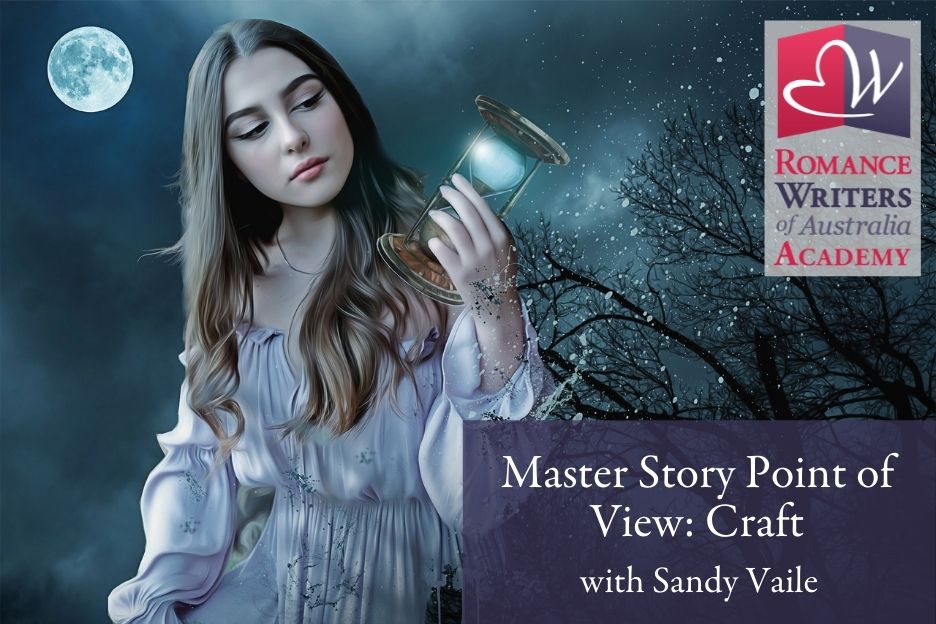Character Experience in Deep Point of View
Characters experience the story world through raw visceral and intellectual information that comes at them from other characters and their environment, but how does that translate onto the page?
When you’re writing in Limited Third Person Point of View (POV), moving into Deep POV draws readers even closer to the character by removing any trace of the author. This has the benefit of enabling readers to experience the story like the character does, so they can be completely immersed in that world.
When something is happening to the character, you only show what they can hear, see, touch, taste and intuit. Their mind and body takes in raw information and it appears on the page exactly how they experience it, e.g. how it sounds, looks, feels and tastes to the character. Use physical sensations, body movements and language, e.g. dialogue or thoughts.
Example of normal Third Person POV:Nervous energy pumped through Anne’s veins as Don stared at her, shaking his head slowly, lips pursed in disappointment.
Example of Deep Third Person POV: Anne shifted from foot to foot, fingers tapping on her thigh as she waited for Don’s reaction. His mouth pressed into a thin line and he shook his head slowly.
When the character processes or reacts to what’s happening in the story, only share their immediate visceral and physical responses, not the conclusions they reach or the thought process that got them there. The way they experience the situation will depend on their personality, current emotional state, the beliefs and scars from their past and skills.
Continuing with the previous example:Then Don sighed. He didn’t say a word before he turned and walked away. Pin pricks stabbed at Anne’s eyes and she blinked rapidly, holding her breath least a strangled cry made itself out of her mouth before he was out of earshot.
See how the author doesn’t tell the reader that Don was disappointed and so decided to leave, or that Anne was nervous about his reaction and upset when he turned his back on her, but they can surmise all of this from the characters’ actions.
Being up close to emotions constantly can be tiring, so I prefer to save Deep POV for times when there are high emotional stakes. At other times you can pull back to a more distant POV, so the character (and reader) have time to process emotions, think through how the situation affects them and make decisions based on what the experience means to them.
As characters move through you story, put yourself in their shoes and experience situations as they would. When you translate this onto the page, focus on their immediate visceral and physical responses. Show the reader what they are thinking and feeling through facial expressions, body language, dialogue and tone of voice. Rather than explaining what is happening, just show the action as it unfolds and let readers draw their own conclusions. This will more thoroughly engage them emotionally and intellectually, resulting in a more satisfying experience for them.
If you would like to go deep with POV in your story, join me in the Master Story Point of View workshop starting on 6th September, to make sure you can recognise and write the POV that suits your story … and do it well.

Course Dates: Master Story Point of View starts on September 6th and runs for four weeks. All information will be pre recorded and available weekly for participants to digest at a time that suits them.
Cost: $55 members, $66 non-members
Venue: Online – RWA Moodle Platform
For more information and booking: https://www.trybooking.com/BOFOH
About Sandy

Sandy Vaile is a motorbike-riding daredevil who isn’t content with a story unless there’s a courageous heroine and a dead body. When she’s not writing fast-paced suspense for Simon and Schuster US, she empowers aspiring fiction writers across the globe to thrive and reach their full potential.
Sandy is an experienced course presenter with a decade of experience in the fiction industry, who prides herself on providing a nurturing learning environment that enables participants to truly absorb the material and apply it to their own work.
In her spare time, Sandy composes procedures for high-risk industrial processes, judges competitions, runs The Fearless Novelist Facebook group and provides personalised coaching services.
Don’t miss out on future blogs and writing resources from Sandy Vaile, subscribe here.

